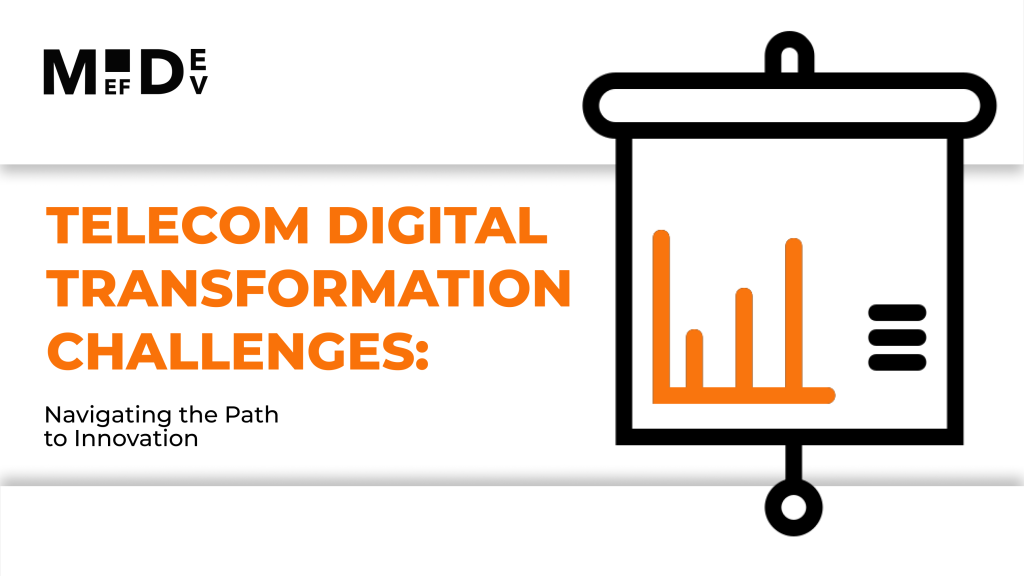
In the dynamic realm of telecommunications, the winds of change are blowing stronger than ever, ushering in an era of digital transformation. However, as telecom companies embark on this transformative journey, they are met with a host of challenges that require strategic solutions. In this post, we explore the key challenges faced by the telecommunications industry in the era of digital transformation and highlight the pathways to overcoming them.
Challenges in Telecom
1. Legacy Infrastructure Dilemma
A significant challenge facing telecom companies in their digital transformation journey is the presence of legacy infrastructure. Decades-old systems, often characterized by siloed operations and outdated technologies, pose a substantial problem. The integration of modern, agile technologies becomes a complex task when bridging the gap between legacy systems and the demands of the digital age.
2. Data Security Concerns
Telecom, being the keeper of vast amounts of sensitive customer data, faces heightened cybersecurity challenges. As digital transformation involves increased connectivity and data sharing, the risk of cyber threats escalates. Ensuring robust cybersecurity measures becomes paramount to effectively protect customer information, maintain trust, and comply with data protection regulations.
3. Cultural Resistance to Change
Digital transformation is not just a technological shift; it’s also a cultural transformation. Resistance to change from employees accustomed to traditional processes and systems can impede progress. Overcoming this challenge requires effective change management strategies, fostering a culture of innovation, and providing comprehensive training to equip the workforce with the skills needed in the digital era.
4. Regulatory Compliance
Telecom, being a highly regulated industry, faces the challenge of navigating complex and evolving regulatory landscapes, and adhering to compliance standards while pursuing digital transformation initiatives can be complicated. Companies must invest in strategies and technologies that ensure compliance without stifling innovation or compromising efficiency.
5. Customer Experience Expectations
As digitalization gets on top of telecom consumers’ priorities, the expectations for seamless, personalized experiences increase. Meeting these expectations requires not only technological upgrades but also a holistic understanding of customer expectations. Failing to deliver a superior customer experience can lead to customer churn, undermining the very objectives of digital transformation.
Solutions
1. Modernization of Legacy Systems
The first step in overcoming the legacy infrastructure dilemma is a strategic modernization plan. Telecom companies need to assess their existing systems, identify critical functionalities, and gradually transition to more flexible, cloud-based or on-premises solutions. This step-by-step approach minimizes disruption while ensuring a seamless integration of new technologies.
2. Fortifying Cybersecurity Measures
Addressing data security concerns involves a multi-layered approach. Telecom companies must invest in cutting-edge cybersecurity technologies, conduct regular risk assessments and penetration tests, and implement robust encryption protocols. Additionally, telecom companies must foster a cybersecurity-aware culture among their employees through relevant training programs and awareness initiatives, that are crucial in mitigating potential cybersecurity threats and data leaks.
3. Cultivating a Culture of Innovation
The resistance to change can be mitigated by cultivating a culture that embraces innovation. Telecom companies should encourage open communication, provide forums for idea sharing, and recognize and reward innovative initiatives. Leadership plays a pivotal role in setting the tone for change, emphasizing its positive impact on the organization and its employees.
4. Agile Compliance Strategies
To navigate regulatory challenges, telecom companies need agile compliance strategies that evolve alongside regulatory changes. Proactive engagement with regulatory bodies, investment in compliance management tools, and the establishment of dedicated compliance teams are essential components. By integrating compliance considerations into the fabric of digital transformation initiatives, companies can ensure adherence without compromising innovation.
5. Personalization through Advanced Analytics
Enhancing customer experiences requires a deep understanding of customer behaviors and preferences. Telecom companies can leverage advanced analytics, AI, and machine learning to analyze customer data, predict preferences, and offer personalized services. Tailoring products, services, and interactions to individual needs fosters customer loyalty and satisfaction.
The Digital Transformation Imperative
The challenges faced by the telecommunications industry in the era of digital transformation are imposing but not overwhelming. Along with willing to change, they require strategic planning, technological innovation, and a cultural shift. As telecom companies address legacy infrastructure, fortify cybersecurity, cultivate innovation, ensure regulatory compliance, and enhance customer experiences, they not only overcome challenges but also position themselves as leaders in the digital age. Digital transformation is not just a necessity for survival; it’s the pathway to future success, where agility, innovation, and customers become the guiding stars in the ever-evolving landscape of telecommunications.



 Sergej Polovnikov
Sergej Polovnikov